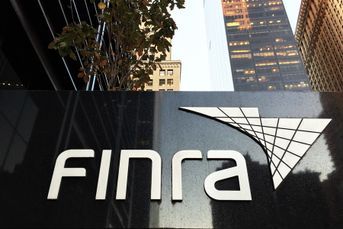Want to attract millennial investors? Time to rethink AUM pricing

New research argues XY Planning Network pricing options are the future of advice.
As the average age of clients continues ticking upwards, firms across the financial advice industry are discussing attracting Gen X and Gen Y clients.
But talk is all that many firms are doing. Recent data from TD Ameritrade reports only 23% of registered investment advisers have a strategy in place for younger clients.
Things are worse at large financial institutions, which are doing little more than producing a robo-adviser to stick young clients in until they reach an acceptable asset threshold for full service, according to Matthew Jackson, director of financial services at consultancy firm Simon-Kucher.
Traditional pricing structures are holding firms back from making any significant changes, Mr. Jackson said.
“In terms of monetizing the wealth management side of things, people don’t think there’s a way of doing it because they’re so trapped inside the old model,” he told InvestmentNews. “People can’t think far enough outside the box to imagine charging in a way that allows you to deliver value.”
If firms want to actually put their money where their mouth is when it comes to next-gen, Mr. Jackson said they should pay attention to the XY Planning Network, the collective of (mostly) young, fee-only and digitally enabled financial planners founded by Alan Moore and Michael Kitces.
(More: XY Planning Network experiences the pains of rapid growth)
“Contrasted to a barren landscape of conformity,” Mr. Jackson said the XYPN is a creating “an environment that’s right for evolution.”
XYPN members offer a wide variety of different business models and pricing structures, but in a new report titled “Nothing to Lose: Pricing for the Next Generation of Wealth Management Clients,” Mr. Jackson identifies a few common traits among the members that he believes push the envelope in terms of working with next-gen.
For example, XYPN advisers tend to describe in detail what services client can expect to receive for various fees. Many present a menu of options and allow clients to pick and choose which services they want to pay for.
The information isn’t buried in fine print or a Form ADV, either. Mr. Jackson’s research found 61% of XYPN adviser websites contain direct pricing information, often prominently displayed in easy-to-read graphics. Information is often presented in dollars rather than percentages, Mr. Jackson said.
Additionally, few XYPN advisers only use one pricing structure or metric. The most typical approach is a combination of three: an AUM percentage, an upfront fee to begin a relationship, and ongoing subscription fees.
Others are also charging one-time fees for specific projects, and others charge per hour for client interactions. In each case, XYPN advisers offer a range of fees tailored to the client.
(More: Custodians ponder charging RIAs asset-based fees)
Ryan Firth of Mercer Street charges $250 per hour, between 100 and 200 basis points of the client’s income plus a percentage of assets for comprehensive financial planning, and one-time fees for single projects. He also offers three levels of planning — basic, intermediate and advanced — and each of those have different pricing.
“I think hourly, project-based, retainer, and subscription all make a lot of sense for individuals who don’t have much in the way of investable assets or may take a more DIY approach to managing their wealth,” Mr. Firth told InvestmentNews. “I think the AUM model is out-dated and does not demonstrate the value-add to the client that a retainer/flat fee/subscription models can.”
I had a 30-something prospect reach out to me specifically because he wasn’t looking for ‘money manager.’ Younger clients definitely are looking for a model other than just AUM.”
Mr. Jackson said two XYPN innovations in particular are doing more than anything in the industry to tackle issue pricing models for next-gen investors.
The first is AdvicePay, a technology developed by XYPN to make it easy to charge clients for wealth management using non-standard fee metrics, such as a subscription model or one-time payments for individual services.
The second is creating a platform affordable to advisers not charging AUM fees. Because XYPN chages a fixed, monthly fee for its platform, advisers aren’t at risk of getting priced out as client assets grow.
So what about millennials makes this model work?
For Mr. Kitces, it fits the younger generation’s expectations for how one pays professionals for services.
“The common view is millennials don’t have any money and won’t pay for advice, but consumer research shows they are the most likely,” he said.
Boomers, on the hand, don’t want to pay for advice because they get it for free from brokers charging commissions. “Our model is natural for serving next generation clients,” Mr. Kitces said.
Now the question is whether the XYPN will encourage the rest of the industry to change. Mr. Kitces is confident that traditional firms will soon see the advantage. The rise of fee-based revenue at broker-dealers is a signal that a fundamental shift is beginning.
“People are happy to pay for advice … Once you break away from products and portfolios, you can have way more fee models that you can charge people,” Mr. Kitces said.
However, firms recognize they aren’t likely to be as profitable with an XYPN-like model as they are charging AUM fees, Mr. Jackson said. And making the pivot would be a difficult and expensive proposition.
But Mr. Jackson remains convinced that XYPN is pushing financial advice towards the future. People are willing to pay $5 for a bottle of water at the airport, why underestimate how much they will pay for financial advice?
“If it’s not profitable now, what about profits in the future?” he said. “Wealth management has been very poorly marketed and very little thinking has gone into pricing for such a long time, that we really don’t know what is possible.”
“The future debt owned to wealth management by XYPN is enormous,” Mr. Jackson said.
Learn more about reprints and licensing for this article.








